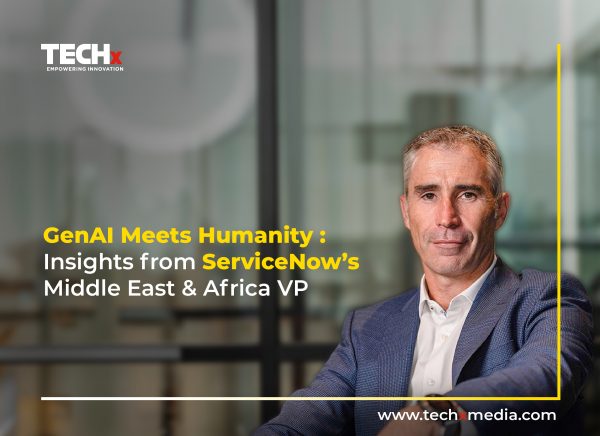
By Mark Ackerman, Area VP for Middle East & Africa, ServiceNow
Artificial intelligence has changed everything, it seems. Across the GCC, it has changed how we spend our free time, how we shop, how we invest, how we communicate…..and how we work. In fact, according to a ServiceNow research study from December 2023, 74% of UAE employees — a whole 26 percentage points higher than the EMEA average — agree that AI is the biggest opportunity for the future of the workforce.
Human in the middle
And in even more good news for regional businesses, large language models are outperforming our wildest expectations about AI. There are already academic studies from reputable universities claiming some of these products have passed the famed Turing test. While we shall have to wait for widespread consensus to build around such findings, we don’t have to wait to test the viability of GenAI in enterprise use cases. This is already happening. LLM variants have proven extremely adept at parsing voice and text. Commands, queries, and other more complex interactions are handled with poise. We cannot speak for Dr Turing but if he were present for some of these human-AI confabs, it is hard to imagine him being unimpressed.
The same quality that makes GenAI such a great creator also makes it a great interpreter. That quality is semantic understanding. The AI is capable of generating a digital facsimile of human-like intuition. This allows it to discern human intent in a way which goes beyond keyword-matching to a more contextual approach to information processing. The approach allows all kinds of inferences, including deducing emotional states from tone or phrasing.
All that is left for us is to figure out how to integrate these technologies in ways that will put the employee front and center and unleash their productivity and creativity and ultimately result in improved employee satisfaction and exceptional customer experiences.
Generation next
When we examine this interpretive side and notice the deep complexities at work, it will come as no surprise when GenAI gives us top-notch summaries from long-form articles and thousand-page documents. The labor hours saved in these use cases alone has an immensely positive impact on the employee experience. It is, of course, a short hop from summarization to the creation of original content. LLM is just one area of GenAI that covers the interpretation and creation of text and audio. The broader field includes images and even videos. These can be used as learning or communication vehicles for employees.
You will note that all of this functionality serves humans. We have concentrated on employees but in serving these employees, GenAI can also tend to the needs of customers by handling standard, FAQ-type issues. Because of GenAI’s interpretive and creative prowess, many of the preferences of the region’s consumers for human contact may melt away. But if they don’t, human help is only a click away. Either way, whether through GenAI or human interaction, the customer will have an experience that is individual to them — impactful and agile, leading to a positive impression and possibly even voluntary brand ambassadorship.
The role of GenAI in a successful experience ecosystem is complex. It might be a frontline customer attendant, a virtual assistant to an employee, a researcher, an analyst, or a stenographer. AI fits in with the vision of humans, doing what is required to deliver quality user experiences, at all relevant points in the business model, for each employee and every customer.
Lift and thrill
Imagine an employee that has spent an hour or more talking a customer through a complex issue. A GenAI-powered virtual assistant may proactively look up relevant information as the conversation progresses, shortening resolution time. That same virtual assistant may then summarize the contact session so the employee can move on more quickly to the next customer. Internally, procurement is a complex process involving policy navigation, identification of the item required — a laptop, for example — and completion of the relevant information to raise a ticket. A GenAI assistant is the ideal candidate for walking the employee through this process. Through straightforward conversation it becomes as easy as a visit to the stationery cupboard.
Both of these scenarios describe streamlined employee experiences. And for the customer, we can imagine all kinds of use cases, from troubleshooting and product-searching, to following up on an order or clarifying an invoice.
Every human breakthrough has found success in leveraging the discovery for the betterment of people. Steam gave us kettles and locomotives. Electricity gave us home heating and the lightbulb. The Internet gave us new forms of communication and commerce. AI will also give us new realms of experience and convenience, provided we deploy it ethically and inclusively. For the enterprise, measurable ROI will also be part of the discussion. If GenAI is going to work for us, we must always be looking for ways to improve it — to lift up employees and thrill customers.